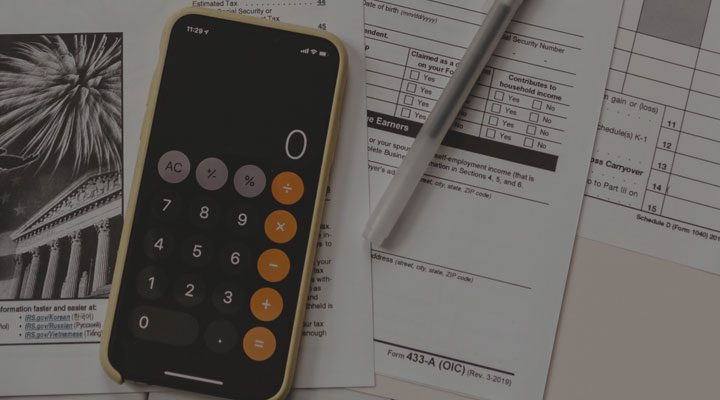UK tax codes explained 2025/26
Your tax code tells your employer how much tax to take from your wages. In this article, we explain how UK tax codes are calculated, what they mean, and the reasons they can change. You’ll also learn how to check your tax code, and what to do if you have the wrong tax code.
If you’re paid through the PAYE system, your tax code determines how much income tax is deducted from your salary or pension
Find out what the different tax codes mean
What to do if you have the wrong tax code
What is a tax code?
Your tax code might appear to be a harmless sequence of numbers and letters, but it’s very important. Just one wrong digit could have a significant impact on your take-home pay.
If you’re being paid through the PAYE system, your tax code will tell your employer how much income tax to deduct from your salary or pension. HMRC will let your employer or pension provider know which tax code to use, giving you your overall salary after tax, but the onus is on you to check it’s correct. Having the wrong tax code could mean that you pay too much or too little tax.
It’s worth noting that you will only have a tax code if you’re employed or in receipt of a private pension. You won’t have one if you’re self-employed (instead you’ll pay tax through the self-assessment system) or are only receiving the state pension.
How are tax codes worked out?
Your tax code consists of letters and numbers, for example, 1257L. The numbers part tells your employer or pension provider how much money you can earn without paying tax. HMRC calculates this number by looking at your personal allowance and any other untaxed income you receive. They also take into account the value of certain other benefits you might receive as part of your job, for example, a company car or health insurance.
The letters in your tax code reveal how your specific circumstances affect your personal allowance. L is the most common letter and signifies that you’re entitled to the standard personal allowance. Other examples include N, which shows you’ve used the marriage allowance to transfer 10% of your personal allowance to your spouse or civil partner, and M, which signals you’ve received 10% of your partner’s personal allowance.
There are lots of potential number and letter combinations, all of which have a different meaning. It’s also possible to have more than one tax code. This might be the case if you have more than one job or receive a pension. You can use a tax calculator to help you work out your take home pay.
What are the different tax codes?
Here is a list of tax codes and what they mean:
Tax code | Meaning | Explanation |
1257L | Standard tax code | Used for most people with one job or pension. The number (1257) refers to the tax-free Personal Allowance (£12,570 for the 2023/24 tax year), and the "L" indicates entitlement to the standard allowance. |
L | Standard Personal Allowance | Indicates entitlement to the standard tax-free Personal Allowance. |
M | Marriage Allowance | You’ve received a transfer of 10% of your partner’s Personal Allowance. |
N | Marriage Allowance | You’ve transferred 10% of your Personal Allowance to your partner. |
T | Other calculations involved | Your tax code includes other calculations (such as company benefits) to determine your Personal Allowance. |
0T | No Personal Allowance or emergency code | Your Personal Allowance has been used up, or HMRC does not have sufficient information about your income, or you've started a new job without having the details required. |
BR | Basic rate tax code | All income from this job or pension is taxed at the basic rate (usually for multiple jobs or pensions). |
D0 | Higher rate tax code | All income from this job or pension is taxed at the higher rate (usually for multiple jobs or pensions). |
D1 | Additional rate tax code | All income from this job or pension is taxed at the additional rate (usually for multiple jobs or pensions). |
NT | No tax | You’re not paying tax on this income |
W1 | Emergency tax code | Used as an emergency tax code for the current pay period (the "week 1" or "month 1" system), meaning tax is calculated without using your full Personal Allowance. |
M1 | Emergency tax code | Similar to W1, used as an emergency tax code for the current pay period, typically for those on a month-to-month basis. |
X | Emergency tax code | Another emergency tax code, usually applied when no other tax code is available, and the Personal Allowance is not applied. |
K | Income exceeding allowance | You have income that is not being taxed elsewhere and is worth more than your tax-free Personal Allowance (such as unpaid tax from a previous year or taxable company benefits). |
These tax codes help employers and pension providers determine how much tax should be deducted from your earnings.
What is an emergency tax code?
Emergency tax codes are temporary tax codes that HMRC uses when they don’t have the necessary information to calculate your correct tax code. This might be the case if you’ve recently changed jobs or have started working for an employer after being self-employed.
An emergency tax code usually ends with M1 if you’re paid monthly or W1 if you’re paid weekly. These codes indicate your tax is being worked out based on your pay for that particular week or month, rather than your overall earnings for the year so far. This could mean you pay more tax than you need to, so it’s worth making sure HMRC have the details they need as quickly as possible.
Emergency tax codes are a temporary measure, and HMRC will update your tax code when they have more information about your income.
Why has my tax code changed?
There are a few reasons why your tax code might change, or you end up being given the wrong one. Some of the most common scenarios are outlined below.
- You change jobs and your new employer hasn’t received your P45 form – in this case, you may be put on an emergency tax code until HMRC has more details
- You have another source of income – for example, a second job or a private pension
- You become an additional rate taxpayer – if you earn more than £100,000, your personal allowance will be gradually reduced and your tax code will be adjusted to reflect this
- There’s a change to your state benefits – starting or stopping claims for taxable state benefits, such as the state pension and bereavement allowance, may affect your tax code
- Your company benefits change – your tax code may need to change if you start receiving taxable employee perks such as a company car, private healthcare or a mobile phone
Check your tax code as soon as possible if any of the above situations apply to you to ensure your salary after tax is correct.
The information provided here is for informational and educational purposes only and does not constitute financial advice. Please consult with a licensed financial adviser or professional before making any financial decisions. Your financial situation is unique, and the information provided may not be suitable for your specific circumstances. We are not liable for any financial decisions or actions you take based on this information.
How to check your tax code
The simplest way to find out your tax code is to check your current payslip, where it should be shown alongside your pay. Your tax code will also appear on your PAYE coding notice (P2), which is usually sent to you before the start of the tax year. It explains what your current tax code is and how it was calculated.
You should also be able to find your tax code on your P45, P60 or, if you’re receiving a private pension, on your pension advice slip. If you can’t locate your tax code via these methods, you can check it online. You’ll need to sign in to your Government Gateway account and follow the instructions to verify your ID and access your tax information.
What to do if you have the wrong tax code
If you think your tax code is wrong, you’ll need to contact HMRC as quickly as possible. You can either call them on 0300 200 3300 or you can log in to your personal tax account and notify them online.
If you’ve overpaid tax in the current tax year, HMRC will tell your employer and your tax code will be adjusted. The overpaid tax will normally be refunded to you through the PAYE system, so you’ll receive more money in your pay packet. If the overpaid tax relates to a previous tax year, HMRC will usually send you a cheque.
An incorrect tax code might also result in you underpaying tax. In this instance, HMRC will normally seek to recoup the money. How they recoup the unpaid tax will depend on the amount that’s outstanding. If you owe less than £3,000, HMRC may change your tax code so you pay more tax on your earnings. However, if you need to pay back more than £3,000, they’ll most likely send you a tax bill.
Either way, if you need to repay tax, it’s important to review your monthly budget as you’ll have less money at your disposal.
How much will I earn after tax?
If you have one job, live in England and don’t receive any company benefits, your tax code number will probably be 1257 for the 2025/26 tax year. This means you can earn up to £12,570 (the current personal allowance) without paying tax. Income above this amount will be taxed, although the rate of tax depends on how much you’re earning and whether you’re a basic rate, higher rate or additional rate taxpayer.
You can use a take home pay calculator to work out your take home pay and understand how much you will be taxed.
Earn interest on your savings
If you want to quickly and easily apply for savings accounts with competitive rates from a range of partner banks, register for a Raisin UK Account today. Registration is completely free and only takes a few minutes. Once your application is approved, simply make your deposit and watch your savings grow.
Save smarter with the Raisin UK newsletter!
What’s in it for me?
- Receive exclusive updates on market-leading rates
- Ensure you never miss a bonus offer
- Keep your finger on the pulse with the latest financial news


